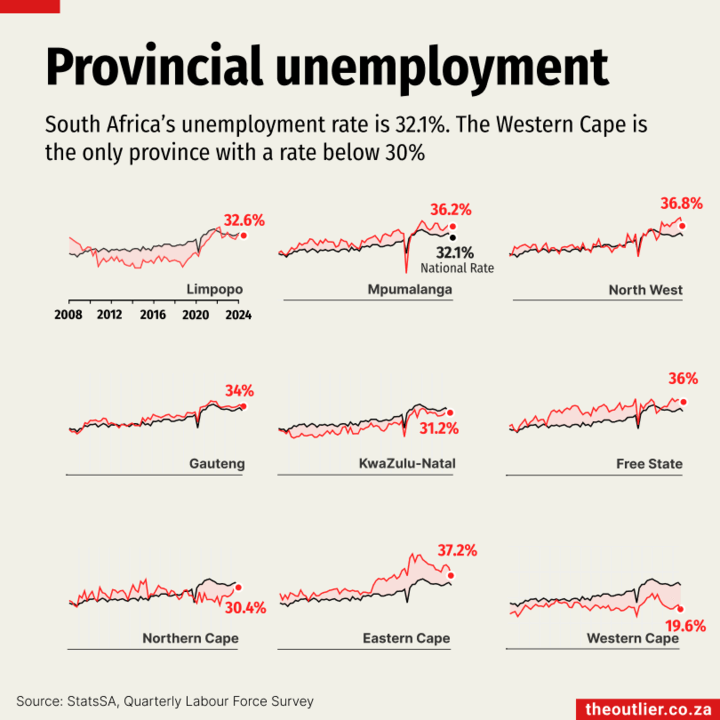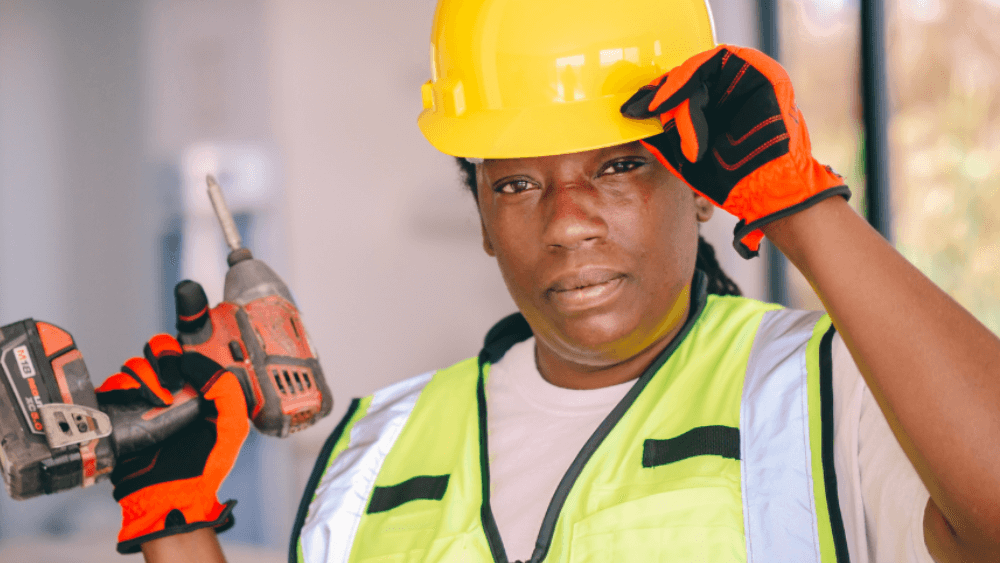South Africa continues to grapple with a staggering unemployment crisis, with rates far exceeding global averages. While the world’s unemployment rate stood at 5.1% last year, South Africa recorded 32.1% in the final quarter of 2023.

Half of the working age population in South Africa is under the age of 35, that’s about 21-million people. Only about 6-million were employed, according to the latest Quarterly Labour Force Survey for July to September 2024. The unemployment rate for people aged 15 to 24 years is 60.2%, and for age 25 to 34 years, it’s 40.4%.

Provincial breakdown
Unemployment isn’t evenly spread around the country. Although StatsSA’s public data doesn’t breakdown youth unemployment by province, you can get a fairly good idea of what’s going on from the provincial estimates.
Only one province has an unemployment rate below 30% and that’s the Western Cape. Its unemployment rate has been consistently below the national rate since 2008. Limpopo and KwaZulu-Natal, which used to be below the national rate, are now pretty much on a par with it. At between 36% and 37%, the Eastern Cape, North West and the Free State have the highest unemployment rates.
The unemployment rate is the percentage of the labour force that is unemployed. But the labour force does not include a category of people who are classified as not economically active.
This includes students, home-makers, people who are ill or have disabilities, people who are too young or old to work as well as discouraged work seekers. Roughly 20% of the ‘not economically active’ group are discouraged work seekers.

‘Not economically active’
Not economically active people make up 40% of the total estimated working age population of the country. In the Western Cape, it’s 33% and in Gauteng, it’s 32.7%. Half of the working age population in the Eastern Cape (49%) is not economically active and in the Northern Cape, North West and KwaZulu-Natal it is about 45%.
The Western Cape has the smallest proportion of discouraged work seekers at 10%. Gauteng has 16%. Limpopo and Mpumalanga have the highest at around 30%.
Discouraged work seekers are included in the unemployment rate to calculate the expanded unemployment rate, which is 41.9% for the July to September 2024 quarter.
If 40% of the working age population is not economically active, then the remaining 60% are participating in the labour force. This is in line with the global labour force participation rate, which the International Labour Organization estimates at 61% for 2023.
Notebook
- Download the data we used for these charts from the Outlier Insights data repository.
